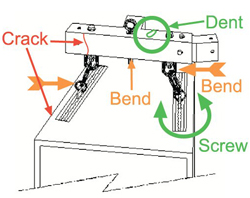What happens if a piece of suspended rental equipment is put in service and falls from its rigging, resulting in damage to the property, as well as to the technician installing it and perhaps even several other crew members?
Besides destroying the rental equipment, there is a high probability that a lawsuit will follow.
If you’re the unfortunate soul owning the piece of equipment that failed, you can count on being the primary defendant in the complaint.
It’s at this point that the wise companies are separated from the not so wise.
The wise company operates a risk management program that includes specialized procedures and guidelines that maximize equipment inspection and minimize the liability associated with this type of accident.
While this seems a fairly common-sense idea, it’s surprising to learn how many companies do not regularly employ risk-mitigating procedures.
Often the risk management systems are not in place because they have never been considered before, or they seem too complex and costly to operate on a regular basis.
In practice, a specialized risk management and quality inspection program adds little short-term expense while contributing significantly to client value and long-term return on investment.
Let’s have a look at some of the inspection procedures for the most common rigging equipment found in the rental and staging industry.
Risk Management Guidelines For Rigging
The equipment purchased for a suspended application must be designed for that purpose and used in accordance with the manufacturer’s instructions:
• The equipment must be compliant with the pertinent standards for overhead suspension;
• The equipment must be manufactured under product traceability controls in order to prove compliance with standards;
• Proper training must be given to those technicians that use the equipment;
• A routine inspection and maintenance program must be documented and include any corrective action taken as a result of the inspection;
• Equipment inspectors must be trained in the proper methods for inspection.
Check out the companion photo gallery for an up-close look at possible rigging risks.
For more information, check out the Rigging & Stagecraft section in the ProSoundWeb Study Hall.















